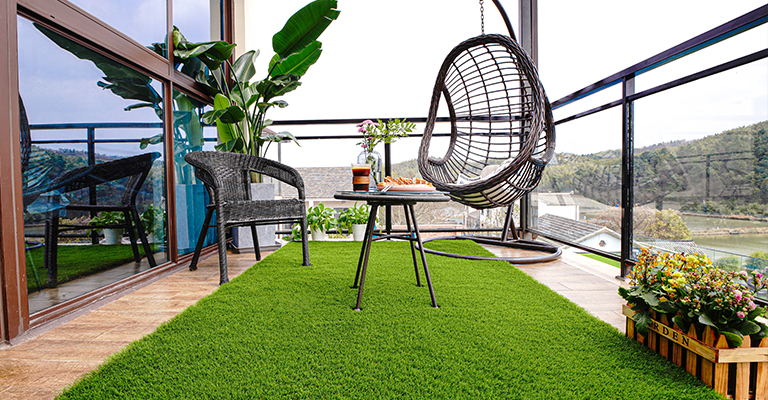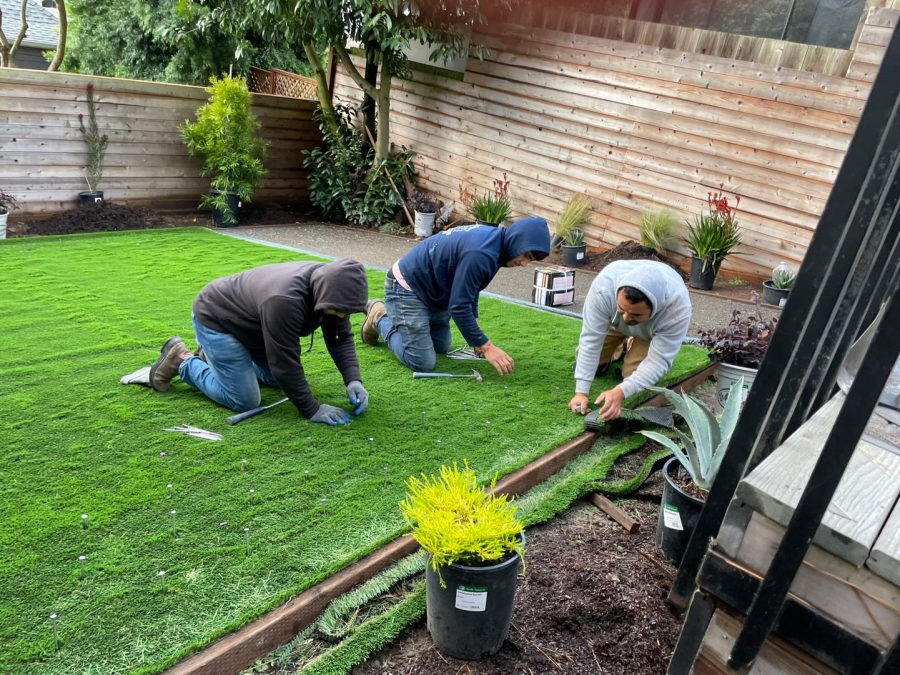Cost-Effective Turf Installation Phoenix AZ for a Easy-Care Lawn Solution
Cost-Effective Turf Installation Phoenix AZ for a Easy-Care Lawn Solution
Blog Article
See Why Homeowners Prefer Synthetic Grass for Lasting Landscaping Practices
As homeowners increasingly focus on sustainability in landscape design, man-made grass has actually become a compelling choice to standard yard. Its capability to conserve water, lower maintenance efforts, and lessen environmental impact positions it as a sensible option for those seeking environmentally friendly solutions. Moreover, the aesthetic appeal and flexibility of synthetic grass cater to diverse style choices. The effects of this change expand beyond plain benefit and appearances, prompting a closer exam of how these selections influence more comprehensive ecological end results. What stays to be explored is the full extent of advantages that synthetic grass can provide to property owners and the environment alike.
Water Conservation Perks
One of the most significant benefits of fabricated lawn is its function in water conservation. In comparison, artificial turf removes this demand entirely, as it does not call for irrigation.
In addition, the setup of fabricated turf can add to a more lasting landscape. Homeowners can substantially lower their water costs, enabling reallocation of sources to other ecological efforts or house uses. Additionally, synthetic grass is made to withstand numerous climatic conditions without the demand for supplemental watering, making it a suitable option for areas dealing with water deficiency.
The ecological benefits expand beyond immediate water cost savings. By decreasing water usage, fabricated grass helps to alleviate the effects of environment modification, protecting crucial ecosystems that are endangered by too much water extraction. As sustainable landscaping practices gain grip, synthetic grass becomes a responsible choice for homeowners looking for to create eco-friendly outdoor spaces.
Reduced Maintenance Initiatives
Man-made grass significantly minimizes maintenance efforts contrasted to conventional yard lawns. With fabricated grass, house owners can eliminate the lengthy tasks connected with all-natural landscape design, such as mowing, feeding, and weeding. This not only saves beneficial time however additionally decreases physical labor, making lawn care easily accessible for people of every ages.
Traditional yards require frequent trimming to keep a visually pleasing elevation, whereas man-made turf stays regularly lush without the need for cutting. Furthermore, homeowners no longer need to apply plant foods or chemicals, which are commonly needed to maintain all-natural lawn healthy.
Additionally, man-made lawn is resistant and long lasting, needing very little maintenance past periodic brushing and rinsing to eliminate particles. This simplicity of maintenance permits home owners to appreciate their outside rooms without the consistent fear of upkeep, providing more time for leisure and family members tasks. Inevitably, the decreased upkeep efforts linked with synthetic grass make it an enticing choice for those looking for a low-maintenance, visually appealing landscape.

Ecological Influence Decrease
There is a growing recognition of the environmental advantages connected with synthetic grass, especially in terms of water preservation and decreased chemical use. Typical grass need considerable quantities of water, particularly in drought-prone areas, causing increased strain on neighborhood water sources. On the other hand, synthetic grass eliminates the need for watering, considerably decreasing water usage and promoting sustainability.
Additionally, standard grass maintenance typically includes the application of chemicals, herbicides, and fertilizers, which can look here add to dirt and water contamination. Synthetic turf alleviates this environmental danger by calling for marginal upkeep and virtually getting rid of the demand for harmful chemicals. This not just improves soil health and wellness yet additionally safeguards neighborhood ecological communities from harmful runoff.
Furthermore, the production go to my site of natural turf yards usually includes the use of fossil gas for trimming and landscaping tools, additional contributing to greenhouse gas emissions. By choosing synthetic grass, home owners can substantially decrease their carbon footprint related to grass treatment tasks.
Aesthetic Allure and Convenience
Along with its ecological benefits, fabricated lawn uses considerable aesthetic charm and flexibility for landscape design. Home owners can achieve a lavish, environment-friendly appearance year-round, eliminating the seasonal fluctuations typically connected with all-natural yard. This constant aesthetic not just improves the visual charm of a residential property however also adds to a refined and properly maintained appearance.
In addition, synthetic grass is available in a selection of designs, colors, and structures, permitting modification to fit individual choices and style motifs - Phoenix turf companies. Whether used in residential yards, commercial spaces, or leisure areas, it can flawlessly incorporate into diverse landscape design designs, from contemporary minimal to lush tropical setups
The versatility of fabricated grass prolongs past mere look; it can be installed in numerous locations, including roofs, patio areas, and even interior spaces, developing opportunities for one-of-a-kind landscape design remedies. In addition, it appropriates for a series of tasks, from children's backyard to pet-friendly settings, providing capability without compromising design.
Ultimately, the aesthetic allure and adaptability of fabricated lawn make it an attractive alternative for homeowners looking for lasting landscape design solutions that do not sacrifice appeal for environmental duty.

Long-Term Expense Financial Savings
Among one of the most compelling advantages of synthetic grass is its capacity for long-lasting cost savings. Unlike all-natural lawn, which calls for routine maintenance-- consisting of mowing, watering, fertilizing, and bug control-- man-made turf substantially lowers these recurring expenses. Homeowners can save a considerable quantity on water bills, particularly in areas where water deficiency is a pushing concern. The removal of next grass treatment services further adds to financial cost savings, as there is no need for specialized tools or labor.
Additionally, man-made grass has a lifespan of 15 to 25 years, depending on its quality and use. This durability reduces substitute expenses, making it a more economical choice in the future. In addition, the initial financial investment in man-made grass can commonly be recouped with the cost savings accrued over time.
While the upfront cost may appear greater compared to sod installment, the advancing financial savings from lowered maintenance and water use commonly surpass these initial expenses. Inevitably, the adoption of artificial lawn not only advertises a sustainable landscaping option but also uses property owners an economically savvy alternative that straightens with lasting budgeting goals.
Verdict
Man-made turf arises as an engaging choice for sustainable landscape design, supplying significant advantages in water conservation, decreased maintenance efforts, and diminished environmental impact. As areas increasingly prioritize eco pleasant techniques, the fostering of synthetic lawn represents a modern action toward attaining durable and lasting landscapes.
Furthermore, synthetic turf is made to stand up to numerous climatic problems without the requirement for extra watering, making it an excellent selection for areas encountering water scarcity. (Turf installation phoenix az)

Fabricated turf emerges as a compelling alternative for sustainable landscape design, supplying significant benefits in water conservation, decreased upkeep initiatives, and diminished ecological impact.
Report this page